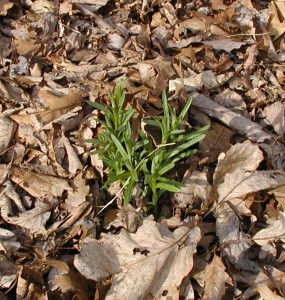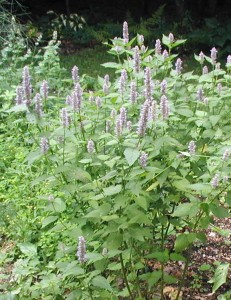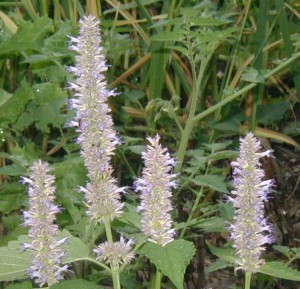We have a handful of herbs returning from last year. I tend to call them perennials as they always ‘come back’ from the previous year, but cilantro and dill are returning from seeds cast off last year not from some rootstock that overwintered like the true perennials.
However you call them, we protect these perennial herbs from frost and freezing weather with leaves piled several inches deep. Leaves are left around the plants until the danger of frost is gone for the season. When freezing weather is forecast after a little plant growth has appeared in the new year, the leaves are there for the raking. We just pull an armful of leaves back over the top of the emerging herbs to protect them from really cold conditions.

Near the middle of May, and probably before then for this year, the leaves will be thinned out and a thin layer left for mulch on the herb and flower beds. Extra leaves will find their resting place in a compost pile.
We use a tarp to move the leaves to and from the compost pile. Just rake the leaves on it – and they can be piled high! – grab two corners of the tarp and drag it where you want to dump the leaves. Sure beats raking them to where ever they have to go!


